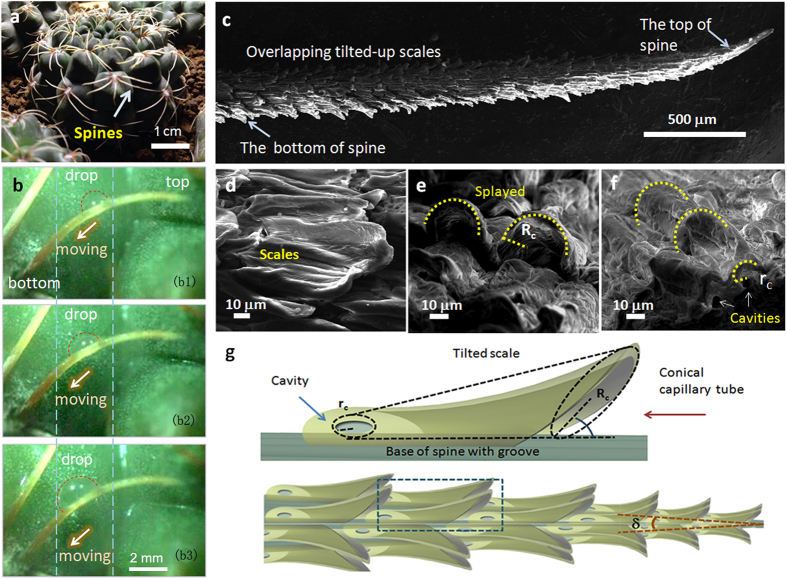Figure 1.
(a) Photo of Gymnocalycium baldianum cactus with clusters of 5–6 spines. (b) Optical observation of condensed drop moving on spine (Frame b1-b3). (c-f), ESEM images of the spine. The surface of the spine is covered with scales, and the tips of the scales tilt at an angle (α) of ~20°. Cone spine opens an apex-angle δ of ~15° (c). Each scale has a width of ~30–50 μm and a length of ~100–130 μm (d). The tilt-up tips of the scales open a semicircle with a radius (Rc) of ~20 μm (e). The cavities are formed between the scales and the surface of the spine with a radius (rc) of ~8 μm (f). (g) Illustration for the scale-covered spine with an apex-angle δ. The space between the scale and the surface of the spine forms a splayed capillary channel, opening different radius of Rc and rc in two ends. Under the scale, there are parallel grooves.

